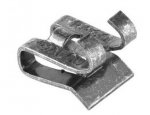Actually, it was 250.4 (A) (2) and (3). He explained, something can be grounded, but is it an
effective ground fault path. Key word,
effective enough to open the OCP

I guess that's why he did not cite 406.6(B) . He actually used a volt meter to prove his point and it did show there wasn't a good fault path for the metal faceplate. Half the time it gave a voltage reading, other times not.
250.4 does specifically apply to the metal faceplate, its basically the part that says " normally non-current carrying conductive materials
enclosing electrical conductors or equipment." The metal faceplate
encloses the electrical conductors.
He did admit he does see some areas do that a with the wall transformers alot, but it is a code violation to do so, a simple volt meter would prove the point. I like it when inspectors are good teachers as well.

